Dungeon Drop Board Game Review
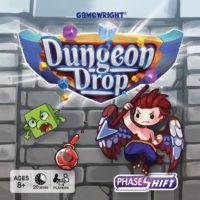
When most people think of a dungeon-crawler game, they either think of Dungeons & Dragons or a tile-laying game where you build out a dungeon and explore.
Well, we’ve got a very unique dungeon-crawler-themed game for you today called Dungeon Drop!
Yep, “drop” may have you scratching your head about what that has to do with dungeons. Are you ready to find out?
Dungeon Drop, from publisher Gamewright and Phase Shift Games, is a unique game for 1-4 players, ages 10 and up.
Players will take the role of a brave hero combing through dungeon rooms in search of gems, gold, treasure and the queen’s favor! But watch out, goblins, trolls and a Dragon would rather not see their shiny prizes taken away.
Do you have what it takes to drop into the dungeon?
How to play Dungeon Drop
Setup:
To set up Dungeon Drop, players each receive a random Race card and Class card. This will not only shape their hero, but will also give certain powers to use throughout the game.
Players then receive 1 random Quest card which defines individual scoring goals and bonus opportunities at the end of the game.
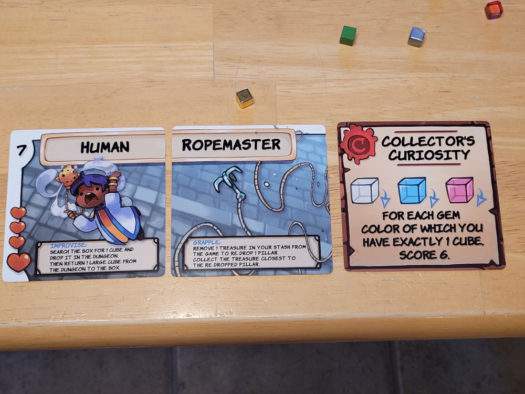
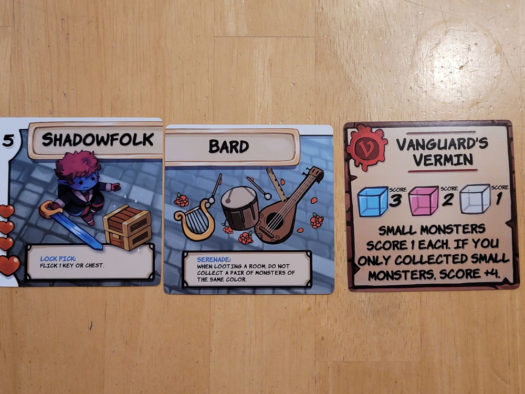
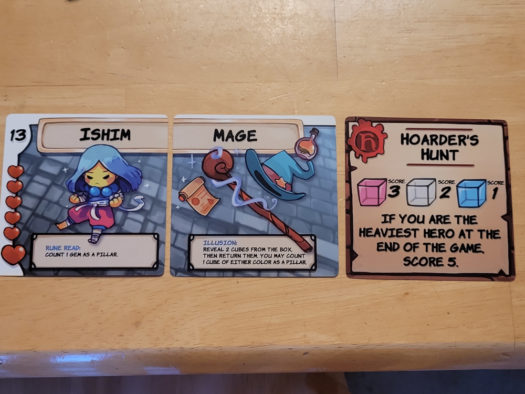
It is now time to create the dungeon.
Players separate out the small cubes from the large cubes and the extra large dragon cube. The player with the lowest initiative score on their Race card will drop all the small cubes, plus the dragon cube, from 6-12″ above the table. Note: no more than 2 cubes should be touching after the drop.
The remaining large cubes are then placed in the lid of the Dungeon Drop box for later use.
Players are now ready to enter the dungeon.
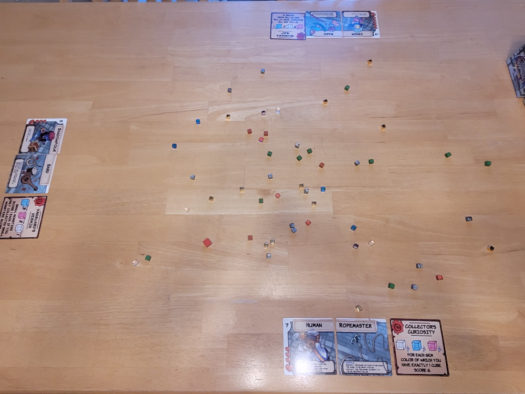
Gameplay:
Dungeon Drop is played over 3 rounds consisting of 1 turn per player.
On a players turn they will take the following 3 actions:
1. Explore
To explore, a player will draw large cube from the box lid based on number of players. For example, in a 3-player game, a player will draw 4 cubes. The active player drops the cubes into the dungeon from 6-12″ above the table.
2. Act
The active player now activates their Race or Class abilities as per the instructions on their card.
3. Loot
The current player will form a room by selecting 3 gray Pillar cubes, and then collect all cubes within or touching that space to their Stash. You may not form a room that would cause you to collect a Pillar or lose your last Health point. See examples below.
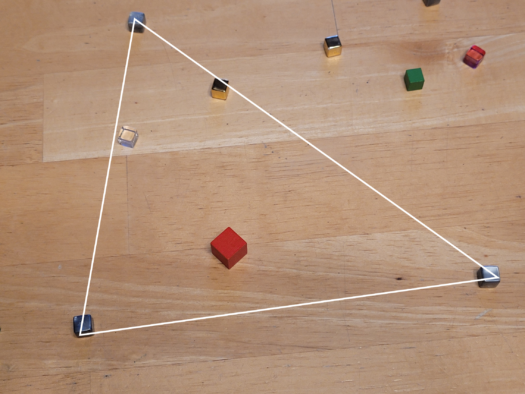
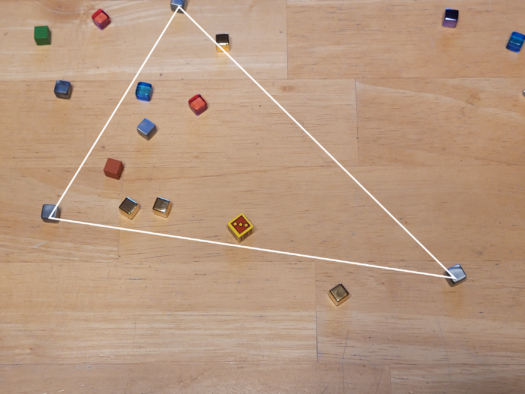
Once each player has taken his or her turn, the round is over and players calculate the weight of their loot. This is done by totaling the number of Treasure cubes they have in their Stash. The player with the least weight will become the first player for the next round.
After 3 rounds have been completed, it’s time to tally up the Treasure!
Final Scoring:
Players reveal their Quest cards to show how their gems are to be scored and if there are any other special scoring bonuses.
For each Key paired with a Chest in your Stash, roll the Chest to see how much it’s worth. Ignore unpaired Keys and Chests.
Gold is worth 1 point each unless otherwise noted.
Trolls are worth 3 points and the Dragon is worth 8 points. Goblins are worth 0 points unless otherwise noted.
Add up the scores and the Hero with the highest total score wins! In the case of a tie, the tied Hero with the highest starting Initiative number is the winner.
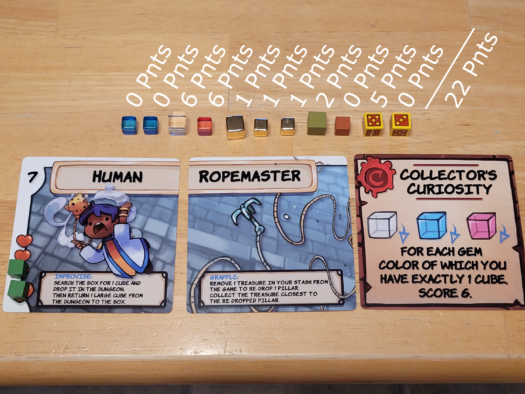
What we like about Dungeon Drop
Dungeon Drop is a new and unique take on an old genre of tabletop games. The mechanics are unlike any game I’ve ever played. Creating the dungeon by drooping the cubes on the table and using spatial awareness to create rooms that are most beneficial for you is a stroke of genius.
This game is very accessible by new players and players of all ages (5-6+) alike. Set up is quick and the learning curve is low, so it’s a game that can get to the table quickly and won’t take all night to play.
I love the artwork on the box and cards and overall the components are great. Artwork on the cubes themselves would have been great, however I understand the difficult logistics behind taking it to that extent.
We can also understand that depending on your lighting, the color of some of the cubes may be difficult to distinguish. But upon closer inspection, players should be able to get it.
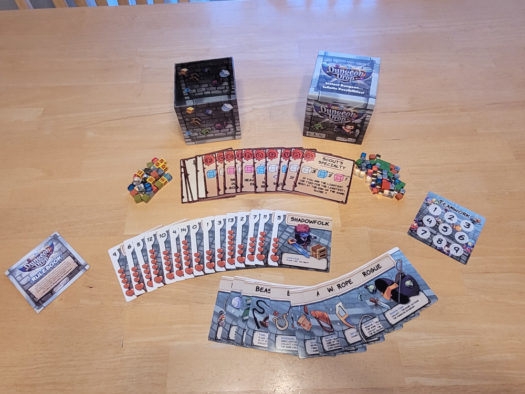
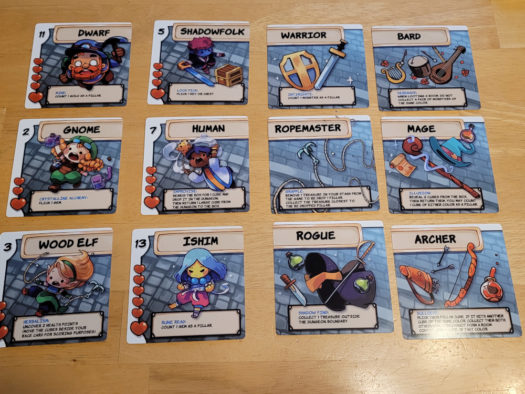
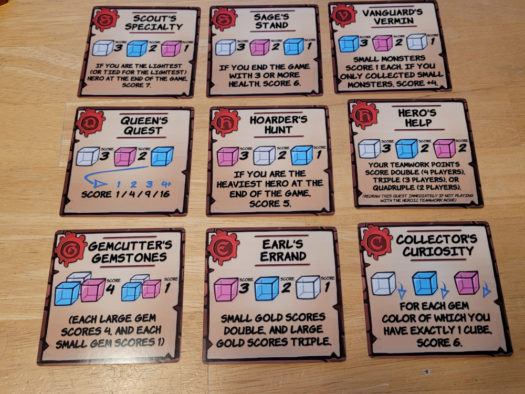
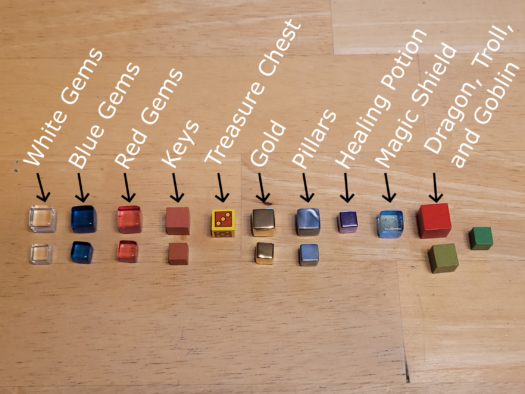
How does score on our “Let’s Play Again” game meter?
With a unique dungeon each time you play and the variable player powers, Dungeon Drop has a lot of replayability which helps it rank high on the “let’s play again” game meter. As mentioned before, the game is easy to learn and fast to play so getting it to the table is not a problem.
Dungeon Drop is definitely a game we’ll be playing multiple times again.
About the Author
Dane is an Advertising and Layout Manager for a national magazine by day and a husband, father of four, and board gamer by night (and mornings). He has a passion for board games and believes board games help bring families closer together while providing kids a unique way to learn many diverse skills. And he thinks they’re downright fun!!!
We’d like to thank Gamewright for a review copy of Dungeon Drop.



I’m not sure about this one. I backed the game through the Kickstarter because I was intrigued by the cool mechanic. However after a few two player games I felt like it was very bland and there wasn’t really a tactic to the game, you just have to be lucky where the cubes fall.
I’ll be trying the game with more players in the future, maybe this will change my view of the game. 🙂